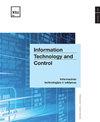Alzheimer's Disease Segmentation and Classification on MRI Brain Images Using Enhanced Expectation Maximization Adaptive Histogram (EEM-AH) and Machine Learning
IF 2
4区 计算机科学
Q3 AUTOMATION & CONTROL SYSTEMS
引用次数: 8
Abstract
Alzheimer’s disease (AD) is an irreversible ailment. This ailment causes rapid loss of memory and behavioral changes. Recently, this disorder is very common among the elderly. Although there is no specific treatment for this disorder, its diagnosis aids in delaying the spread of the disease. Therefore, in the past few years, automatic recognition of AD using image processing techniques has achieved much attraction. In this research, we propose a novel framework for the classification of AD using magnetic resonance imaging (MRI) data. Initially, the image is filtered using 2D Adaptive Bilateral Filter (2D-ABF). The denoised image is then enhanced using Entropy-based Contrast Limited Adaptive Histogram Equalization (ECLAHE) algorithm. From enhanced data, the region of interest (ROI) is segmented using clustering and thresholding techniques. Clustering is performed using Enhanced Expectation Maximization (EEM) and thresholding is performed using Adaptive Histogram (AH) thresholding algorithm. From the ROI, Gray Level Co-Occurrence Matrix (GLCM) features are generated. GLCM is a feature that computes the occurrence of pixel pairs in specific spatial coordinates of an image. The dimension of these features is reduced using Principle Component Analysis (PCA). Finally, the obtained features are classified using classifiers. In this work, we have employed Logistic Regression (LR) for classification. The classification results were achieved with the accuracy of 96.92% from the confusion matrix to identify the Alzheimer’s Disease. The proposed framework was then evaluated using performance evaluation metrics like accuracy, sensitivity, F-score, precision and specificity that were arrived from the confusion matrix. Our study demonstrates that the proposed Alzheimer’s disease detection model outperforms other models proposed in the literature.利用增强期望最大化自适应直方图(EEM-AH)和机器学习对MRI脑图像的阿尔茨海默病分割和分类
阿尔茨海默病(AD)是一种不可逆转的疾病。这种疾病会导致记忆的迅速丧失和行为的改变。最近,这种疾病在老年人中很常见。虽然这种疾病没有特殊的治疗方法,但它的诊断有助于延缓疾病的传播。因此,在过去的几年里,利用图像处理技术对AD进行自动识别取得了很大的进展。在这项研究中,我们提出了一种新的框架,用于使用磁共振成像(MRI)数据对AD进行分类。首先,使用2D自适应双边滤波器(2D- abf)对图像进行滤波。然后使用基于熵的对比度有限自适应直方图均衡化(ECLAHE)算法增强去噪图像。从增强的数据中,使用聚类和阈值技术分割感兴趣区域(ROI)。使用增强期望最大化(EEM)进行聚类,使用自适应直方图(AH)阈值算法进行阈值分割。从ROI中生成灰度共生矩阵(GLCM)特征。GLCM是一种计算图像特定空间坐标中像素对出现的特征。使用主成分分析(PCA)降低这些特征的维数。最后,使用分类器对得到的特征进行分类。在这项工作中,我们采用了逻辑回归(LR)进行分类。从混淆矩阵中识别阿尔茨海默病的分类结果达到96.92%的准确率。然后使用从混淆矩阵得出的准确性、灵敏度、f分数、精度和特异性等性能评估指标对所提出的框架进行评估。我们的研究表明,提出的阿尔茨海默病检测模型优于文献中提出的其他模型。
本文章由计算机程序翻译,如有差异,请以英文原文为准。
求助全文
约1分钟内获得全文
求助全文
来源期刊

Information Technology and Control
工程技术-计算机:人工智能
CiteScore
2.70
自引率
9.10%
发文量
36
审稿时长
12 months
期刊介绍:
Periodical journal covers a wide field of computer science and control systems related problems including:
-Software and hardware engineering;
-Management systems engineering;
-Information systems and databases;
-Embedded systems;
-Physical systems modelling and application;
-Computer networks and cloud computing;
-Data visualization;
-Human-computer interface;
-Computer graphics, visual analytics, and multimedia systems.
 求助内容:
求助内容: 应助结果提醒方式:
应助结果提醒方式:


